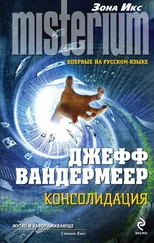Джефф Вандермеер - The Thackery T. Lambshead Cabinet of Curiosities
Здесь есть возможность читать онлайн «Джефф Вандермеер - The Thackery T. Lambshead Cabinet of Curiosities» весь текст электронной книги совершенно бесплатно (целиком полную версию без сокращений). В некоторых случаях можно слушать аудио, скачать через торрент в формате fb2 и присутствует краткое содержание. Жанр: Фэнтези, на английском языке. Описание произведения, (предисловие) а так же отзывы посетителей доступны на портале библиотеки ЛибКат.
- Название:The Thackery T. Lambshead Cabinet of Curiosities
- Автор:
- Жанр:
- Год:неизвестен
- ISBN:нет данных
- Рейтинг книги:5 / 5. Голосов: 1
-
Избранное:Добавить в избранное
- Отзывы:
-
Ваша оценка:
- 100
- 1
- 2
- 3
- 4
- 5
The Thackery T. Lambshead Cabinet of Curiosities: краткое содержание, описание и аннотация
Предлагаем к чтению аннотацию, описание, краткое содержание или предисловие (зависит от того, что написал сам автор книги «The Thackery T. Lambshead Cabinet of Curiosities»). Если вы не нашли необходимую информацию о книге — напишите в комментариях, мы постараемся отыскать её.
The Thackery T. Lambshead Cabinet of Curiosities — читать онлайн бесплатно полную книгу (весь текст) целиком
Ниже представлен текст книги, разбитый по страницам. Система сохранения места последней прочитанной страницы, позволяет с удобством читать онлайн бесплатно книгу «The Thackery T. Lambshead Cabinet of Curiosities», без необходимости каждый раз заново искать на чём Вы остановились. Поставьте закладку, и сможете в любой момент перейти на страницу, на которой закончили чтение.
Интервал:
Закладка:
The nurses quite reasonably assumed that Edmund Dacey’s delayed growth was the result of substituting the Automatic Nanny’s mechanical custody for actual human touch, and expected him to gain weight under their care. But after two years as a resident at the institute, during which the nurses had showered attention on him, Edmund had scarcely grown at all, prompting the staff to look for an underlying physiological cause.
Dr. Lambshead hypothesized that the child was indeed suffering from psychosocial dwarfism, but of a uniquely inverted variety: what Edmund needed was not more contact with a person but more contact with a machine. His small size was not the result of the years he spent under the care of the Automatic Nanny; it was the result of being deprived of the Automatic Nanny after his father felt he was ready for human care. If this theory were correct, restoring the machine would cause the boy to resume normal growth.
Dr. Lambshead sought out Lionel Dacey to acquire an Automatic Nanny. He gave an account of the visit in a monograph written many years later:
[Lionel Dacey] spoke of his plans to repeat the experiment with another child as soon as he could ensure that the child’s mother was of suitable stock. His feeling was that the experiment with Edmund had failed only because of the boy’s “native imbecility,” which he blamed on the child’s mother. I asked him what he knew of the child’s parents, and he answered, rather too forcefully, that he knew nothing. Later on, I visited the orphanage from which Lionel Dacey had adopted Edmund, and learned from their records that the child’s mother was a woman named Eleanor Hardy, who previously worked as a maid for Lionel Dacey. It was obvious to me that Edmund is, in fact, Lionel Dacey’s own illegitimate son.
Lionel Dacey was unwilling to donate an Automatic Nanny to what he considered a failed experiment, but he agreed to sell one to Dr. Lambshead, who then arranged to have it installed in Edmund’s room at the Brighton Institute. The child embraced the machine as soon as he saw it, and in the days that followed he would play happily with toys as long as the Nanny was nearby. Over the next few months, the nurses recorded a steady increase in his height and weight, confirming Dr. Lambshead’s diagnosis.
The staff assumed that Edmund’s cognitive delays were congenital in nature, and were content as long as he was thriving physically and emotionally. Dr. Lambshead, however, wondered if the consequences of the child’s bond with a machine might be more far-ranging than anyone suspected. He speculated that Edmund had been misdiagnosed as feebleminded simply because he paid no attention to human instructors, and that he might respond better to a mechanical instructor. Unfortunately, he had no way to test this hypothesis; even if Reginald Dacey had successfully completed his teaching engine, it would not have provided the type of instruction that Edmund required.
It was not until 1946 that technology advanced to the necessary level. As a result of his lectures on radiation sickness, Dr. Lambshead had a good relationship with scientists working at Chicago’s Argonne National Laboratory, and was present at a demonstration of the first remote manipulators, mechanical arms designed for the handling of radioactive materials. He immediately recognized their potential for Edmund’s education, and was able to acquire a pair for the Brighton Institute.
Edmund was thirteen years old at this point. He had always been indifferent to attempts by the staff to teach him, but the mechanical arms immediately captured his attention. Using an intercom system that emulated the low-fidelity audio of the original Automatic Nanny’s gramophone, nurses were able to get Edmund to respond to their voices in a way they hadn’t when speaking to him directly. Within a few weeks, it was apparent that Edmund was not cognitively delayed in the manner previously believed; the staff had merely lacked the appropriate means of communicating with him.
With news of this development, Dr. Lambshead was able to persuade Lionel Dacey to visit the institute. Seeing Edmund demonstrate a lively curiosity and inquisitive nature, Lionel Dacey realized how he had stunted the boy’s intellectual growth. From Dr. Lambshead’s account:
He struggled visibly to contain his emotion at seeing what he had wrought in pursuit of his father’s vision: a child so wedded to machines that he could not acknowledge another human being. I heard him whisper, “I’m sorry, Father.”
“I’m sure your father would understand that your intentions were good,” I said.
“You misunderstand me, Dr. Lambshead. Were I any other scientist, my efforts to confirm his thesis would have been a testament to his influence, no matter what my results. But because I am Reginald Dacey’s son, I have disproved his thesis twice over, because my entire life has been a demonstration of the impact a father’s attention can have on his son.”
Immediately after this visit, Lionel Dacey had remote manipulators and an intercom installed in his house and brought Edmund home. He devoted himself to machine-mediated interaction with his son until Edmund succumbed to pneumonia in 1966. Lionel Dacey passed away the following year.
The Automatic Nanny seen here is the one purchased by Dr. Lambshead to improve Edmund’s care at the Brighton Institute. All the Nannies in Lionel Dacey’s possession were destroyed upon his son’s death. The National Museum of Psychology thanks Dr. Lambshead for his donation of this unique artifact.
Honoring Lambshead: Stories Inspired by the Cabinet

Stories Inspired by the Cabinet
In early 2002, Ray Russell of prestigious specialty press Tartarus approached Lambshead about publishing a charity chapbook. It would celebrate Lambshead’s life from an unusual angle: by focusing on the objects in the doctor’s cabinet. Russell and Lambshead shared a fascination with supernatural literature that included a love for Arthur Machen, Elizabeth Jane Howard, and Thomas Ligotti. Several years earlier, Russell had even visited the cabinet for the express purpose of viewing some letters from Machen to Lambshead.
After some deliberation, Lambshead gave his blessing—“as long as all proceeds benefit the Museum of Intangible Arts and Objects and the Institute for Further Study,” both of which he thought were underfunded and “staffed by wraiths in ragged clothes; it might be good for morale if they could afford sandwiches at least.” Russell agreed and immediately embarked on the project, hoping to ride the coattails of the forthcoming Bantam/Pan Macmillan editions of The Thackery T. Lambshead Pocket Guide to Eccentric & Discredited Diseases .
Choosing from a list of items drawn up by Russell, several writers contributed, including the then-unknown Naomi Novik (who at the time wrote period ghost stories under the name N. N. Vasek). By January 2003, the chapbook was ready to be sent to the printer. It also included a somewhat overenthusiastic introduction titled “Virile Lambshead: Catch the Disease!,” written by an editor at the medical journal the Lancet.
The inspiration for the stories varies greatly. For example, the actual foot that sparked Jeffrey Ford’s “Relic” probably dates to the Crimean War’s legendary Charge of the Light Brigade. As Lambshead put it, “unless the family mythology is wrong, this foot of my saintly grandfather was mummified due to the chance confluence of devastating military technologies and a freak dismount caused by a faulty stirrup.” Similarly, Holly Black’s story is mostly conjured up from the imagination, the item in question being “an odd Paddington knockoff that I felt sorry for.”
Читать дальшеИнтервал:
Закладка:
Похожие книги на «The Thackery T. Lambshead Cabinet of Curiosities»
Представляем Вашему вниманию похожие книги на «The Thackery T. Lambshead Cabinet of Curiosities» списком для выбора. Мы отобрали схожую по названию и смыслу литературу в надежде предоставить читателям больше вариантов отыскать новые, интересные, ещё непрочитанные произведения.
Обсуждение, отзывы о книге «The Thackery T. Lambshead Cabinet of Curiosities» и просто собственные мнения читателей. Оставьте ваши комментарии, напишите, что Вы думаете о произведении, его смысле или главных героях. Укажите что конкретно понравилось, а что нет, и почему Вы так считаете.












